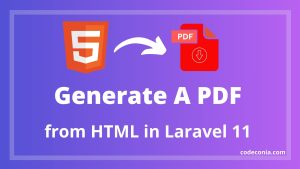Tricks and tips for Laravel blade templating
Welcome to our blog about tricks and tips for Laravel blade templating!
Blade is the default templating engine for Laravel, and it’s a powerful tool for building dynamic and interactive web applications. In this blog post, we’ll share some tips and tricks that can help you get the most out of Laravel blade.
Use @php to execute PHP code in your templates
Sometimes you need to execute a bit of PHP code in your blade template, but you don’t want to use a full PHP block. In these cases, you can use the @php directive to execute a single line of PHP code:
@php
$name = 'John';
@endphp
Hello, {{ $name }}!
This is especially useful when you need to manipulate data or perform a calculation before displaying it in the template.
Use @include to reuse code in multiple templates
If you have a piece of code that you want to reuse in multiple templates, you can use the @include directive to include a blade partial. A blade partial is a separate blade template that contains a piece of code that you want to include in multiple places.
To create a blade partial, create a new blade template in the resources/views/partials directory, and use the @include directive to include it in your main template:
@include('partials.header')
<div>Your content goes here</div>
@include('partials.footer')
This is a great way to keep your templates clean and organized, and make it easy to reuse code across multiple templates.
Use @if and @else to conditionally display content
The @if and @else directives allow you to conditionally display content in your blade templates. For example:
@if ($user->isAdmin())
<p>Welcome, administrator!</p>
@else
<p>Welcome, guest!</p>
@endif
You can also use @elseif and @endif to create more complex conditional statements.
Use @foreach to loop through arrays and collections
The @foreach directive allows you to loop through arrays and collections in your blade templates. For example:
<ul>
@foreach ($users as $user)
<li>{{ $user->name }}</li>
@endforeach
</ul>
You can also use the @empty directive to display a message if the array or collection is empty:
<ul>
@foreach ($users as $user)
<li>{{ $user->name }}</li>
@empty
<li>No users found</li>
@endforeach
</ul>
Use @isset and @empty to check for variables and values
The @isset and @empty directives allow you to check if a variable or value is set or empty, and display content accordingly. For example:
@isset($user)
<p>User is set</p>
@endisset
@empty($users)
<p>No users found</p>
@endempty
These directives are particularly useful when working with optional variables that may or may not be set.

Share with your friends:
How To Generate A PDF from HTML in Laravel 11
Hello , I was trying to generate a PDF payment receipt for my SAAS application and when i search for […]
June 22, 2024
How to create Laravel Flash Messages
Laravel flash messages are a convenient way to display one-time notifications to the user after a form submission or other […]
December 22, 2022
How to make Custom Artisan Command in Laravel
Custom Artisan commands are a useful feature of Laravel that allow you to define your own command-line commands for tasks […]
December 22, 2022
Tips for Laravel migrations
Laravel migrations are a powerful tool for managing and modifying your database schema in a structured and organized way. Here […]
December 22, 2022
Digital Marketing Toolkit
Get Free Access to Digital Marketing Toolkit. You can use all our tools without any limits
Get Free Access Now




